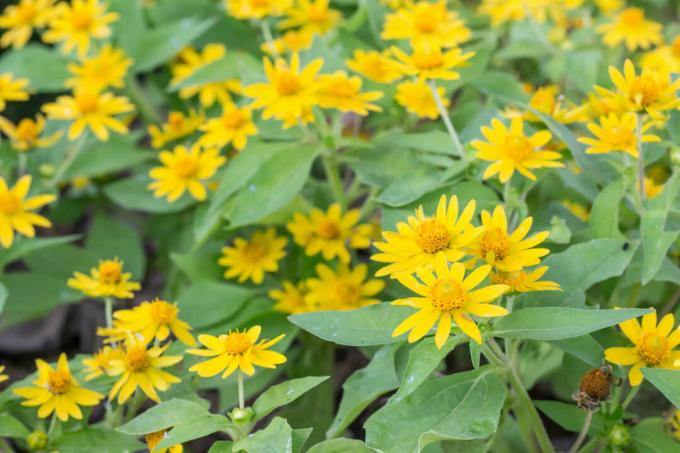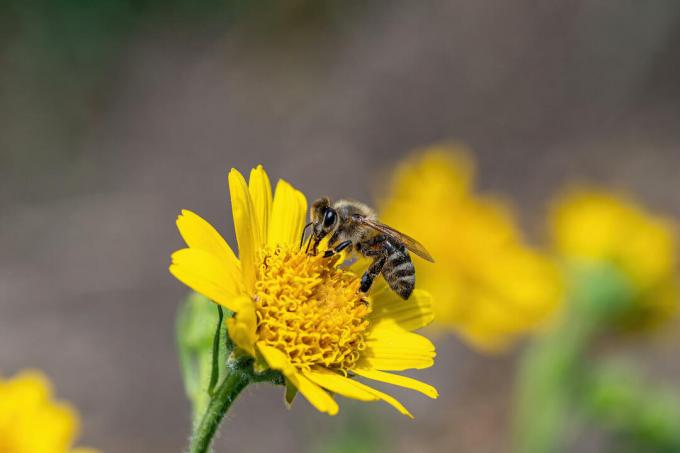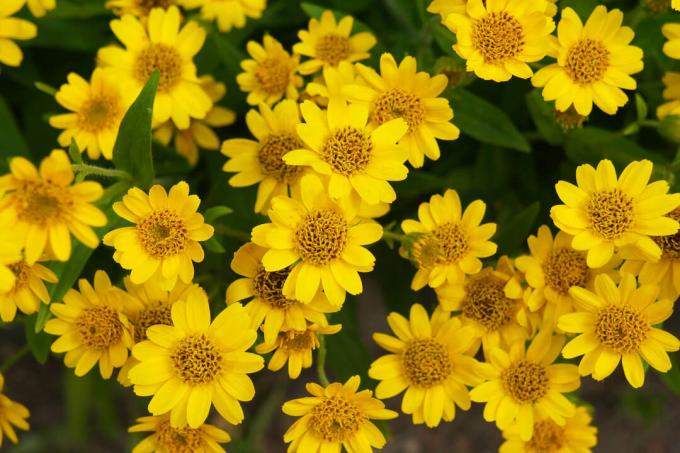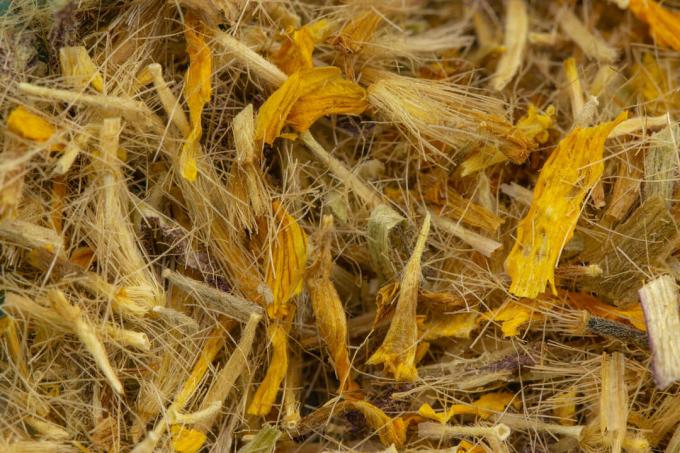Many know the classic arnica ointment or tincture as a natural remedy. We show how to plant the arnica flower in the garden, how to get the seeds and how to use arnica.

The real arnica (Arnica montana) is known to us primarily as a medicinal plant. In addition, the species, also known as Berg-Wohlleih, has a special ornamental value with its bright yellow flower heads.
contents
- Arnica: origin and properties
- Arnica flower: when is the flowering time?
- Arnica Varieties
-
plant arnica
- The right location and time for arnica cultivation
- multiply arnica
- Caring for the arnica
- Arnica: Uses & Ingredients
Arnica: origin and properties
The real arnica (Arnica montana) is a species of the genus Arnica in the daisy family (Asteraceae). Their natural range includes mountainous regions such as the Alps, the Ore Mountains and the Pyrenees and extends to the Balkans, the Baltic States and southern Scandinavia. In some European countries, the wild form is threatened with extinction.
Arnica grows as a perennial, herbaceous perennial, about 30 - 60 centimeters high. It forms underground rhizomes. The green, finely hairy shoots sprout from these, on which hairy, opposite leaves appear. They are fresh green in color and lanceolate in shape. In addition to the true leaves, the plant forms slightly longer basal leaves at the base, growing in a rosette. The arnica flowers are up to 8 centimeters in size and golden yellow in colour.

Arnica flower: when is the flowering time?
The yellow flowers of the arnica flower open between June and September. They are up to 8 centimeters in size. The individual petals of the flower heads are arranged like sunbeams and are triple-toothed.
Arnica Varieties
In addition to the real arnica (Arnica montana) there are about 30 other Arnica species that also flower beautifully and thrive in our gardens. An example is the species Arnica chamissonis ssp. foliosa, also called American Arnica. It forms slightly more compact flowers than the real arnica.

plant arnica
The bright yellow arnica is a real eye-catcher, especially in natural or cottage gardens as well as in rock gardens. Once the right location has been found, the arnica plants can be planted or the seeds sown.
The right location and time for arnica cultivation
Arnica plants prefer full sun, meager locations such as former moor areas or poor meadows. The soil should be rather sandy and well-drained with an acidic pH. Arnica is very sensitive to a high lime content. Therefore, the substrate should be acidified with peat, needles, grape pomace, bark humus or sour rock powder.
The right time for planting arnica plants is late summer.
Plant arnica in the bed:
- A nutrient-poor, loose soil like ours is suitable as a substrate Plantura Organic Herb & Seed Soil, mixed with sand (mixing ratio 1:1). Due to the high air capacity of this soil, the arnica also thrives very well in garden soil that is too firm and dense
- To acidify, some needle litter, bark humus or grape pomace should be mixed in
- Planting distance: 25 cm
Plant arnica in a pot:
- A balanced, peat-free potting soil, like ours, is suitable as a substrate Plantura organic universal soil, which should be mixed with sand for the arnica (mixing ratio 1:1). A slightly more nutrient-rich soil is needed in the pot, otherwise the arnica will not have a nutrient depot available
- Needle litter, bark humus or grape pomace are suitable for lowering the pH value of the substrate
- Pot size: At least 30 cm in diameter and just as deep
multiply arnica
After flowering, the seeds of the real arnica develop. These are equipped with small umbrellas. If the perennial has the right germination conditions in the garden, it will spread all by itself via its seeds. If you want to control the propagation better, you can also harvest the arnica seeds and then sow them in the desired place in the garden or in a pot on the balcony or terrace. Since the seeds are very light, you should press them down well. The real arnica is one of the light germs, which is why it should only be covered very thinly or preferably not at all with substrate.
As an alternative to direct sowing outdoors, which is possible from the end of March to mid-May, young plants can also be grown indoors from February. Seed soil, such as ours, is suitable as a substrate Plantura Organic Herb & Seed Soil. This should be acidified and mixed with sand to ensure low pH and good permeability. Fill a few growing containers with the germination substrate and distribute the seeds on top. Since arnica seeds need light to germinate, they should not be covered with substrate. Place the jars in a bright, sheltered place, for example on a window sill, but not in direct sunlight. Keep the substrate moist. From the end of May (after the ice saints), the young plants can then be transplanted to the desired location in the garden or on the balcony.
tip: In order to increase the germination rate, one can stratify the arnica seeds. To do this, mix the seeds with some sand and place them in the refrigerator at 4 to 8 °C for about 4 to 6 weeks. Due to the cold stimulus, the seeds then germinate more reliably.
Caring for the arnica
After planting, the arnica plants should be watered. In addition, the perennial does not require special care. Only in long periods of drought is she happy if she gets a little water from time to time. Arnica montana should not be fertilized as it is sensitive to too high a nutrient content in the soil. However, potted arnica plants should be repotted occasionally to bring in fresh soil and some nutrients.
Arnica is a hardy plant. In winter, the above-ground parts of the plant die off and reserve substances are stored in the underground rhizomes. The rhizomes serve as outlasting organs. New flowering shoots will sprout from them next spring.
tip: To avoid increasing soil pH, always water with acidified water. For example, by adding some peat to the irrigation water and letting it sit for a few hours, the pH of the water will drop into the acidic range. Alternatively, a dash of (apple) vinegar is also suitable.
Arnica: Uses & Ingredients
The right time to harvest medicinal arnica flowers is between the beginning of July and the end of August. After harvesting, the flowers can be dried. If you also want to harvest the arnica roots, you should wait about three years after planting before digging up the roots.
Real arnica has been cultivated since the 18th century. Used as a medicinal plant for centuries. Arnica flowers contain helenaline and dihydrohelenaline, which have antimicrobial and anti-inflammatory effects. Above a certain concentration, however, these and other ingredients have a toxic effect. So arnica is poisonous if used incorrectly. For this reason, arnica is no longer officially approved for internal use. Even low concentrations of the ingredients in teas with arnica flowers can cause poisoning.

In addition, the arnica plant contains flavonoids, triterpenediols and other substances that are external applied have anti-inflammatory properties, but at the same time cause allergic reactions be able.
Various preparations with arnica are available on the market, some of which you can also make yourself. Arnica tinctures, infusions and ointments can be used externally to treat bruises, bruises, sprains and rheumatic muscle and joint pain. It can also be used on animals.
For more information on other medicinal plants that are great to grow in your own garden, see our special article on the top 10 Medicinal plants from your own garden.
